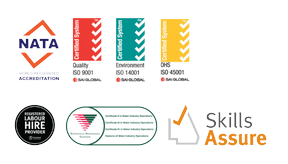If you’ve ever enrolled in a nationally recognised course in Australia—like a Certificate III in Aged Care or a Diploma of Business—you were probably studying with a Registered Training Organisation (RTO). But what exactly is an RTO, and what does it take to become one?
Let’s break it down in simple terms.
What is an RTO?
An RTO is a training provider that’s officially approved to deliver nationally recognised training and issue qualifications. This means the courses they offer meet national standards and are recognised across Australia.
To become an RTO, a training provider must be registered with the Australian Skills Quality Authority (ASQA)—the national regulator for vocational education and training.
What does an RTO have to do?
Becoming and staying an RTO involves a lot of responsibility. Here are the key things every RTO must do:
Follow National Standards
RTOs must meet the Standards for RTOs, which cover everything from how courses are delivered to how students are assessed. These standards help ensure that students receive high-quality training that prepares them for real jobs.
Use Qualified Trainers
All trainers and assessors must be properly qualified and have up-to-date experience in the industry they’re teaching. They also need to keep learning themselves through professional development.
Be Financially Sound
RTOs must prove they are financially stable and able to support their students throughout their training. This includes submitting financial reports to the regulator.
Report to the Government
RTOs must regularly report data to ASQA, including how many students are enrolling, completing courses, and how satisfied they are with the training.
Collect a USI
Every student needs a Unique Student Identifier (USI)—a bit like a student tax file number. RTOs must collect or verify this before issuing any certificates.
What Do RTOs Need to Implement?
To meet these requirements, RTOs often put a range of systems and practices in place, such as:
- Policies and procedures for enrolment, assessment, complaints, and appeals
- Trainer development programs to keep staff qualified and industry-current
- Student management systems to track enrolments, progress, and results
- Secure record-keeping systems to store student data for 30 years
- Data reporting tools to submit accurate information to ASQA
- Financial planning and risk assessments to ensure long-term viability
- Quality assurance processes like internal audits and continuous improvement plans
These systems help RTOs stay compliant, deliver great training, and support students effectively.
Why Does This Matter to You?
If you’re considering a course, understanding what it takes to be an RTO helps you choose the right way to study. It means:
- You’re learning from a provider that meets national standards
- Your qualification will be recognised across Australia
- Your records are safely stored and accessible in the future
- Your training is delivered by qualified professionals
- You’re supported by a system designed to help you succeed





